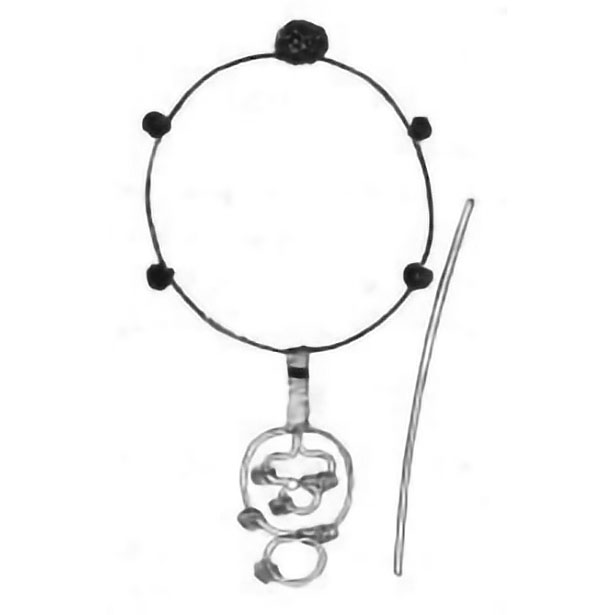taipinggu overview
 Taiping drum (pinyin: tài píng gǔ) is also called "single drum" and "sheepskin drum". Kind of music. Popular all over the North. One of the forms of Han folk dance. The performers are all male. Actors hold a circular single drum made of iron bars with a diameter of about a foot and the drum surface is covered with donkey skins, beat drums with bamboo drum keys, and sing and dance. There are duet and group singing. Lyrics are divided into "Inner Drum" and "Outer Drum": the former is a must-sing word, and the latter has auxiliary lyrics that can be increased or decreased, and the content is mostly folklore and mythology. In the old society, it was sometimes used in superstitious activities such as offering sacrifices and dancing to the gods. After liberation, it was reformed to express the joy and joy of the people.
Taiping drum (pinyin: tài píng gǔ) is also called "single drum" and "sheepskin drum". Kind of music. Popular all over the North. One of the forms of Han folk dance. The performers are all male. Actors hold a circular single drum made of iron bars with a diameter of about a foot and the drum surface is covered with donkey skins, beat drums with bamboo drum keys, and sing and dance. There are duet and group singing. Lyrics are divided into "Inner Drum" and "Outer Drum": the former is a must-sing word, and the latter has auxiliary lyrics that can be increased or decreased, and the content is mostly folklore and mythology. In the old society, it was sometimes used in superstitious activities such as offering sacrifices and dancing to the gods. After liberation, it was reformed to express the joy and joy of the people."Taiping Drum" is mainly popular in all parts of the north, and it was popular in the Ming and Qing Dynasties. The Huaibei area of Anhui is called "Duangong Drum" and "Xiguzi"; Gansu, Ningxia, and Shaanxi are called "Sheepskin Drum", which has the nature of witch dance. Beijing's name is "Yingnian Drum". In every street and alley, children in groups of three or five are beating each other's Taiping drums, and the sound of drums can be heard everywhere.
The dance posture of "Taiping Drum" is healthy and simple, with strong local flavor, lively and diverse performance forms, strong local flavor, lively and diverse performance forms, and there is no limit to the number of people. The rhythm of the drumming is complex and changeable, and the drum beats are short and clear, like "popping beans". With the rhythm, the bell on the dancer's waist and the iron ring on the drum whip are sonorous, crisp and pleasant. The methods of playing include front and back, drum edge, handle, hand drum, left and right swinging of the hoop, up and down the hoop and so on. The drums are in the hands of the dancers, either spinning, or throwing up, sometimes playing a drum with each hand, with various patterns and endless changes. After liberation, the "Taiping Drum" circulated all over the country, after removing the dust of feudal superstition, its healthy and beautiful artistic brilliance is more gorgeous.
Taiping drum is a dance with Taiping drum as a prop, which is called "singing rope" by folk artists, symbolizing "peace and happiness". The performers work in pairs, moving and jumping. Everyone held a drum in the left and a drumstick in the right, and danced while playing, the drum and metal sounds were crisp and pleasant. The young man jumped up and stretched tall and straight, while the girl's dance was flexible and light.
Taiping drums have been circulating in Beijing since the Ming Dynasty. In the early Qing Dynasty, the Taiping drums were extremely popular inside and outside the capital. At the end of the Qing Dynasty, Taiping drums were introduced into the Mentougou area. Historically, many villages in Mentougou, men and women, young and old all played the Taiping Drum. In the Qing Dynasty, the court also played the Taiping Drum on New Year's Eve, which means "Peace", so Beijing also called the Taiping Drum "New Year's Drum". Taiping drums are most active in the twelfth lunar month and the first lunar month of each year. They are very attractive in local festivals and folk activities. People playing the Taiping drums are looking forward to peace and prosperity. Playing the Taiping drum can not only enhance the festive atmosphere, but also reflect the festival customs in Beijing to some extent.
- Pinyin:tài píng gǔ
- nickname:single drum
- shape:Shaped like a fan, framed with iron and covered with animal skins
- popular area:all over the north
overview of other similar instruments
- sanyanxiao overview
- Daguangxian overview
- Leiqin overview
- hahao overview
- yandundagu overview
- Han Xiaozheng overview
- Fang Xiang overview
- guanzi overview
- zhuqin (Dao Qin) overview
- zhuiqin overview
- bangzi overview
- three-stringed piano overview
- Gehu overview
- xiao overview
- xiaokonghou overview
- Konghou overview
- Sheng overview
- suona overview
- hulusi overview
- gushao overview
 渝公网安备 50010702504639号
渝公网安备 50010702504639号